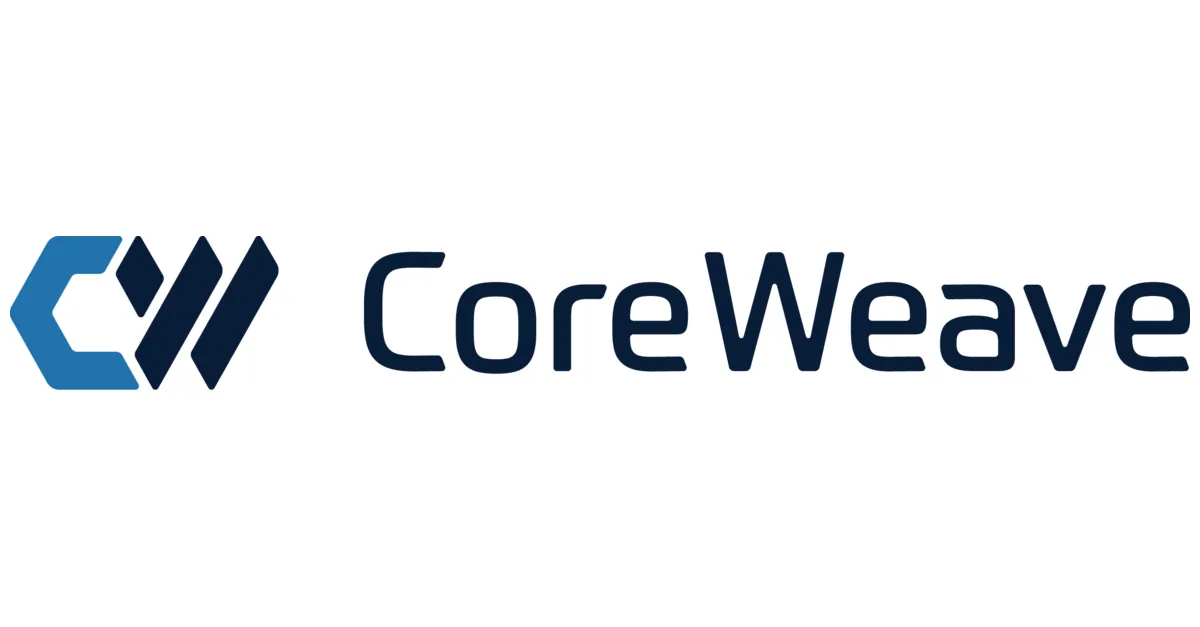GPU Hosting Options: Cloud, Bare Metal, and Dedicated Servers
Finding the right GPU hosting solution means understanding several key considerations. You’ll want to weigh factors like raw computing power, the ability to scale, the pricing structure, and the specific needs of your AI workloads or deep learning tasks that require a high-performance GPU.
The best GPU providers offer a wide selection of hosting environments.
- Cloud GPU Hosting provides access to GPU resources within a provider’s shared cloud infrastructure, offering scalability and a pay-as-you-go model. These resources are available in various specifications. Importantly, cloud computing resources can utilize shared GPU resources—either a fraction of a GPU (e.g., using NVIDIA’s Multi-Instance GPU technology on supported GPUs), a single GPU, or multiple GPUs (often interconnected with technologies like NVIDIA NVLink for enhanced performance).
- Dedicated GPU Hosting is where the client has dedicated access to an individual host, they get all the CPU, memory and storage allocated to the host. It’s exclusive for you! No one else uses it, that includes any dedicated GPU cards attached to the server. Importantly, dedicated servers can also integrate with the hosting providers cloud platform and can be consumed on demand.
- Bare Metal GPU Hosting is where you own or lease the bare metal server. These servers are typically abstracted away from the cloud platform and configured within a colocation data center, or sometimes integrated with a client’s private cloud. They are usually very powerful servers with one or more GPUs.
The type of GPU-optimized frameworks you need, such as TensorFlow, PyTorch, or CUDA libraries, depends on your circumstances. However, it’s critical to choose reliable, security-focused GPU infrastructure to get you started. We have been looking at some leading cloud GPU providers and specialists in cloud, dedicated servers, and bare metal GPU offerings.
Here is how we rank them specifically for strong GPU hosting options:
#1: Atlantic.Net
Introduction:
With roots going back to 1994, Atlantic.Net has evolved into a versatile provider of cloud services. Their offerings include dedicated GPU server hosting and cloud GPU instances specifically engineered for high-performance computing (HPC) and demanding machine learning tasks. Clients can access a curated range of NVIDIA GPUs, such as the powerful NVIDIA L40S and the dual-GPU NVIDIA H100 NVL, distributed across their international data center footprint.
Advantages:
- Access to specialized NVIDIA hardware, including the L40S and H100 NVL, meets the needs of advanced AI modeling and diverse high-performance workloads.
- Clients can choose between dedicated GPU servers, offering maximum control and resource isolation, or scalable cloud-based “GPU as a Service” (GaaS) options designed to optimize upfront investment.
- A significant emphasis on security is demonstrated by their SSAE 18 SOC 2 & SOC 3 certifications and readiness for HIPAA/HITECH audits, which is particularly beneficial for organizations handling sensitive data.
- The assurance of a 100% uptime Service Level Agreement (SLA) is complemented by 24/7 technical support headquartered in the United States.
- Operations are supported by a global network of data centers in the US, Canada, the UK, and Singapore, providing geographical diversity.
Ideal for:
- Organizations in specialized fields like AI/ML engineering, biotechnology, and healthcare that process sensitive data and therefore require services adhering to HIPAA compliance standards.
- Users whose projects demand substantial, uninterrupted computational power from dedicated GPU servers for intensive tasks such as deep learning model training, complex graphics rendering, or large-scale scientific simulations.
- Businesses that prioritize a provider’s extensive operational history, a demonstrable commitment to security, and readily available, U.S.-based customer support.
- Clients seeking cost-effective solutions for long-term GPU hardware rentals, especially when the hyper-scalability of larger cloud platforms isn’t the primary driver, will find Atlantic.Net’s pricing models attractive.
#2: Amazon Web Services (AWS)
Introduction:
As a dominant hyper-scale cloud provider, AWS delivers a vast portfolio of IT services. This includes an extensive and frequently updated selection of GPU instances, such as the P-series optimized for high-throughput compute tasks and the G-series for graphics-intensive applications. AWS supports a wide spectrum of demanding workloads, from sophisticated machine learning model training to high-resolution video rendering, leveraging its massive global infrastructure.
Advantages:
- An unparalleled selection of NVIDIA GPU models and instance sizes allows users to precisely tailor resources to diverse performance and budgetary requirements.
- The platform’s inherent design allows for dynamic scaling of GPU resources, enabling businesses to efficiently adjust to fluctuating workload demands and optimize spend.
- Seamless integration with AWS’s comprehensive ecosystem of services—spanning storage, networking, databases, and AI/ML tools—can significantly streamline application development and deployment.
- A worldwide network of data centers ensures low-latency access for a global user base and facilitates disaster recovery planning.
- Developers benefit from broad support for various GPU-optimized frameworks and libraries, accelerating the development of AI models and other GPU-accelerated applications.
Disadvantages:
- AWS’s intricate pricing structure can be challenging, sometimes leading to higher-than-anticipated costs, particularly for sustained high-usage scenarios if not carefully managed.
- Data egress fees are an important budgetary consideration and can accumulate significantly depending on data transfer patterns.
- While powerful, the sheer breadth of service options and configurations can present a steep learning curve for users new to the AWS ecosystem
Ideal for:
- Large enterprises and rapidly growing startups that need highly scalable GPU instances for developing and deploying machine learning models, deep learning algorithms, and complex high-performance computing simulations.
- Development teams looking to leverage a rich, deeply integrated ecosystem of cloud services to build sophisticated, multi-component applications.
- Organizations with a global operational footprint that require robust, geographically distributed GPU infrastructure to serve their AI workloads with high availability and low latency.
- Users whose workflows involve performing complex big data analytics in concert with their GPU-accelerated computational tasks.
#3: Google Cloud Platform (GCP)
Introduction:
GCP is another leading global cloud GPU provider, known for its strong capabilities in data analytics, machine learning, and natural language processing. They offer a variety of GPU instances equipped with powerful NVIDIA GPUs, designed for high computational power.
Advantages:
- GCP excels in AI model training and deep learning, offering direct pathways to Google’s cutting-edge AI research, tools like TensorFlow and Vertex AI, and alternative accelerator options like Google’s own Tensor Processing Units (TPUs).
- For certain NVIDIA GPU models, GCP presents a competitive pricing structure, which includes the flexibility of per-second billing, allowing for granular cost control.
- A high-capacity, private global network underpins GCP’s services, contributing to consistent performance and low-latency data transfer worldwide.
- Beyond virtualized instances, GCP also makes bare metal options available for specific high-performance scenarios, granting direct, unmediated access to underlying GPU hardware.
- Robust support for containers and Kubernetes (via Google Kubernetes Engine – GKE) simplifies the orchestration and scaling of distributed GPU workloads.
Disadvantages:
- The range of GPU hardware options, while good, might sometimes be less extensive than other cloud providers in specific regions.
- Some services have a steeper learning curve and require expert knowledge of existing GCP services.
- It can be costly if resources are not managed carefully.
Ideal for:
- Data scientists and researchers focused on machine learning and AI models.
- Organizations that are already invested in the Google Cloud Platform, often those looking for big data processing and analytics.
- Users requiring cutting-edge NVIDIA GPU technology for training large language models or natural language processing.
- Businesses looking for flexible GPU server hosting that scales with their AI workloads.
#4: Microsoft Azure
Introduction:
Microsoft Azure provides a comprehensive suite of cloud services, including N-series Virtual Machines, which are GPU instances designed for compute-intensive and graphics-intensive applications. Azure supports a wide range of GPU resources suitable for AI/ML, video editing tasks, and scientific computing.
Advantages:
- Exceptional integration with the broader Microsoft ecosystem, including Windows Server, Microsoft Entra ID (formerly Azure AD), and Azure’s wide array of platform services, benefits enterprises already utilizing Microsoft technologies.
- Azure provides a diverse selection of NVIDIA GPU options, catering to visualization workloads (NV-series), AI/HPC (ND-series, NC-series), and general-purpose GPU compute.
- The platform offers a spectrum of GPU-accelerated VMs, some of which deliver performance characteristics approaching that of dedicated servers, alongside more traditional cloud GPU elasticity.
- Strong support for hybrid cloud scenarios, enabling organizations to consistently manage and deploy GPU workloads across on-premises environments and Azure.
- Microsoft continues to expand its focus on AI workloads, providing dedicated platforms like Azure Machine Learning and tools that streamline the AI development lifecycle on its GPU infrastructure.
Disadvantages:
- The Azure portal and service options can sometimes be complex to navigate.
- Costs can escalate if not carefully monitored, similar to other major cloud providers.
- Some of the newest GPU models might have limited regional availability initially and an extensive wait list.
Ideal for:
- Enterprises that are already invested in the Microsoft platform (Windows Server, Entra ID, or Azure Platform Services).
- Users who need GPU hosting options for professional graphics applications, video encoding, and complex engineering simulations.
- Organizations working on AI model training and inferencing that can benefit from Azure’s AI platform.
- Researchers needing computing power for scientific research and simulations.
#5: CoreWeave
Introduction:
CoreWeave has carved out a niche as a specialized cloud GPU provider, purpose-built from the ground up for extremely large-scale AI workloads, demanding deep learning tasks, high-fidelity visual effects (VFX) rendering, and other compute-heavy processing pipelines. They distinguish themselves by offering broad access to a diverse range of NVIDIA GPUs, often including the very latest generations, with a strong emphasis on high-performance bare metal and Kubernetes-native environments.
Advantages:
- Access to a vast inventory of cutting-edge NVIDIA GPU models, often available sooner than larger, generalized clouds.
- Potentially significant cost savings (reportedly 30-80% less expensive) for GPU compute compared to traditional hyperscalers.
- Highly scalable infrastructure designed for massive AI model training and inference.
- Kubernetes-native platform, streamlining deployment and management for teams familiar with container orchestration.
- Offers flexible storage and high-performance networking optimized for GPU clusters.
Disadvantages:
- Does not offer the broad selection of general cloud services found in Atlantic.Net, AWS, GCP, or Azure; primarily focused on GPU compute.
- May require more DevOps expertise for setup and management if not leveraging their managed services, as it can be less of a turnkey solution for those unfamiliar with Kubernetes.
- Heavy reliance on NVIDIA for its GPU hardware could be a long-term strategic consideration.
Ideal for:
- AI research labs, machine learning engineers, and VFX studios requiring access to large quantities of the latest NVIDIA GPUs at scale.
- Organizations focused on training deep learning models, large language models (LLMs), or running complex scientific simulations that can benefit from bare metal performance.
- Users looking for potentially more cost-effective pricing on high-performance GPU hosting for power-hungry applications and comfortable with a specialized cloud environment.
- Teams that are adept with Kubernetes and looking for a GPU infrastructure that integrates well with it.
Why Traditional CPUs Can’t Always Keep Up:
CPUs are not necessarily a problem; in fact, they are still essential for GPU hosting. What we mean is that there is a much better, more efficient way to develop AI/ML applications, handle large-scale rendering, or image analysis.
So what’s wrong with CPUs?
- Sequential Processing: CPUs excel at a wide range of general-purpose tasks and can handle serial operations or a limited number of parallel threads efficiently. However, for tasks requiring massive parallelism (like those in AI/ML), they process operations more sequentially per core compared to GPUs.
- Limited Cores for Parallel Tasks: While multi-core, the CPU cannot match GPUs for massively parallel jobs. GPUs are simply better at doing millions of simple tasks simultaneously.
- Bottlenecks for Intensive Data: Large-scale data analytics and complex calculations can overwhelm CPUs, resulting in applications that lag significantly.
Cloud GPUs
What makes the GPU so good at handling AI/ML applications? It’s down to the simple reason that the GPU can do many more tasks simultaneously, and perform much quicker.
GPU servers are great at:
- Training complex deep learning models
- Performing big data analytics at speed
- Powering intricate graphics rendering, online gaming, and completing video editing tasks efficiently
- Driving high-performance computing tasks and complex engineering simulations
Choosing the right GPU hosting provider can help to improve your business goals and objectives almost immediately. This guide will uncover the various GPU hosting options that are available, helping you find the perfect match for your resource-hungry applications.
Final Pointers for Picking a Cloud GPU Provider
GPU hosting has introduced superior performance, breakneck processing power and the very latest technology to global businesses en masse. If you’re feeling like your computing tasks are stuck in the slow lane, it may be time to level up to a GPU platform.
For today’s most data-intensive applications, standard hosting options may not be powerful enough. This is because standard central processing unit (CPU)-based servers often just don’t cut it for modern AI workloads.
Despite being very powerful, there are better options available with graphics processing units (GPUs) that introduce incredible parallel processing capabilities, allowing users to get the best performance from one or more GPUs.
Selecting the right GPU hosting provider from the many GPU hosting options is a big decision. To make sure you get the best fit, keep these key factors in mind:
- The Right GPU Hardware: Do you need specific NVIDIA GPU models (e.g., for AI model training vs. graphics rendering)?
- Scale of Your Workloads: How much computing power do your resource-heavy processes really need? Will you need to scale up or down, or in and out?
- Your Budget: What pricing structure works best? Compare on-demand cloud GPUs with longer-term dedicated servers. Does the provider offer discounts for 1, 2, or 3-year commitments?
- Control vs. Convenience: Do you prefer the full control of bare metal solutions or the managed environment of cloud GPU instances?
- Supported Frameworks: Does the provider easily support the GPU-optimized frameworks critical for your AI/ML or deep learning tasks?
Whether you lean towards flexible cloud GPU instances, the raw power of dedicated GPU servers, or the direct control of bare metal solutions, the ideal hosting provider should have GPU hosting options with the computing resources needed.
GPU hosting enables your business to tackle any compute-intensive application, from cutting-edge AI/ML and deep learning projects to high-performance computing and smooth video editing tasks efficiently. Take the time to evaluate each GPU server hosting option, and you’ll unlock the performance your projects deserve, enabling businesses and researchers to push new boundaries while achieving unparalleled performance.




